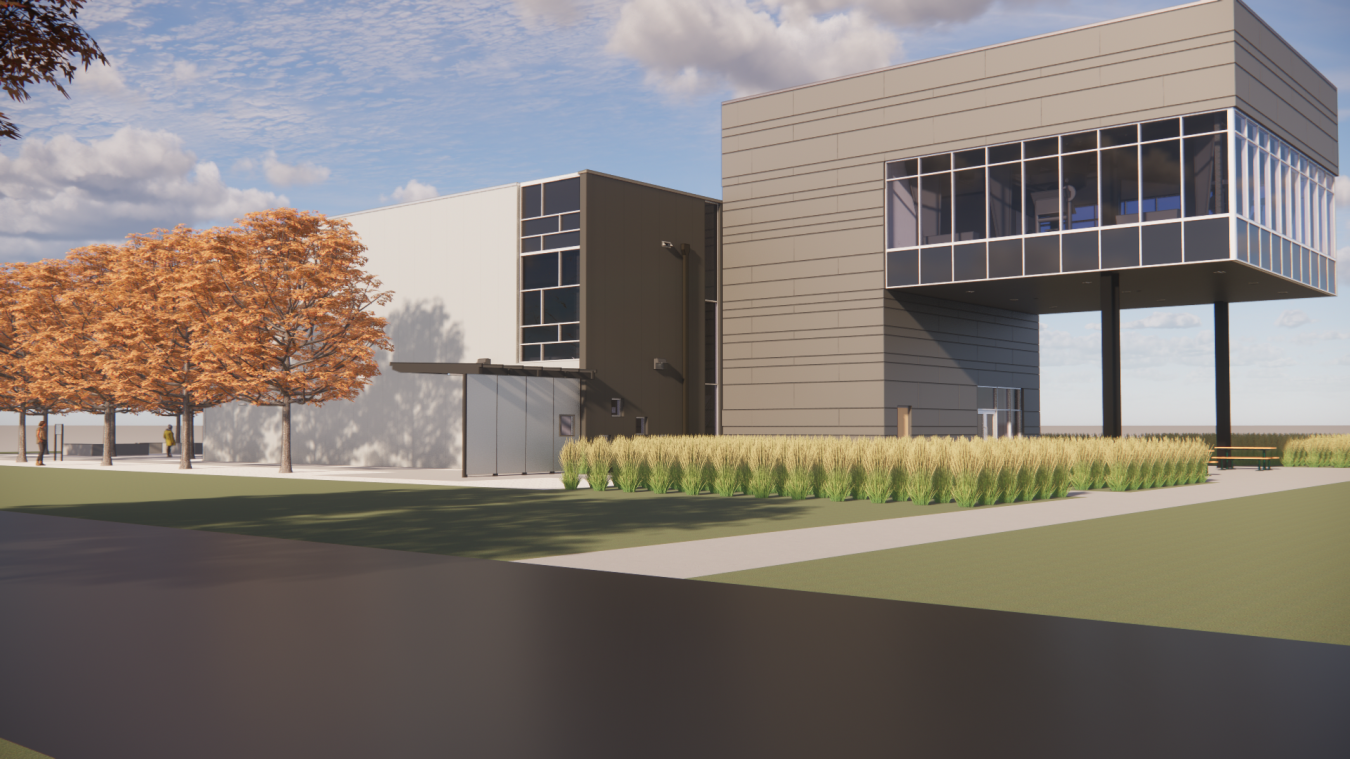– Officials celebrated progress on a facility here last week that will give the public a new perspective of what was once the world’s largest building as they broke ground for the K-25 Viewing Platform at the East Tennessee Technology Park.
Office of Environmental Management
May 16, 2023
From left, American Museum of Science and Energy Director Alan Lowe; Roane County representative Bonnie Argus; U.S. Army Corps of Engineers Nashville District Deputy Commander Maj. Todd Mainwaring; Geiger Brothers Project Engineer Ian Fitzpatrick; Oak Ridge Office of Environmental Management Deputy Manager Laura Wilkerson; Oak Ridge Historian Ray Smith; UCOR President and CEO Ken Rueter; and Gregor Smee, Smee + Busby Architects break ground on the K-25 Viewing Platform.
OAK RIDGE, Tenn. – Officials celebrated progress on a facility here last week that will give the public a new perspective of what was once the world’s largest building as they broke ground for the K-25 Viewing Platform at the East Tennessee Technology Park.
Through an interagency agreement signed last year, the Oak Ridge Office of Environmental Management (OREM) provided the funds for the project, while the U.S. Army Corps of Engineers (USACE) will oversee its construction. Geiger Brothers was awarded the $9.9 million contract to build the facility.
Smee + Busby Architects designed the K-25 Viewing Platform and OREM contractor UCOR will provide engineering support to USACE and its contractor during construction.
“It couldn’t be scripted any better that the agency responsible for the birth of Oak Ridge would be the one to help build the infrastructure that shares the history and accomplishment of that original story,” OREM Deputy Manager Laura Wilkerson said of USACE.

The K-25 Viewing Platform, now under construction, is expected to be open to the public late next year. Located next to the K-25 History Center, this new facility will provide visitors a complete view of K-25’s massive 44-acre footprint.
The K-25 Viewing Platform will be adjacent to the recently opened K-25 History Center and provide visitors a complete view of the building’s massive 44-acre footprint.
“I imagine standing on the viewing platform and seeing this ghost of a facility where so much happened and so much important work was done,” said Maj. Todd Mainwaring, deputy commander, USACE, Nashville District. “I think it'll really drive home the importance of the mission here and what the community delivered.”
Its construction is one of the final components of a multi-project agreement OREM signed in 2012 to commemorate the history of the former Oak Ridge Gaseous Diffusion Plant, where the K-25 Building was located. OREM completed the other elements in previous years, which included construction of the K-25 History Center and preservation of the historic Alexander Inn.
“To be here, to work on this site, and provide the community and visitors this building is profound,” said Geiger Brothers Project Engineer Ian Fitzpatrick. “We want to hit the ground running so there’s no delay in the community having access to it.”
The K-25 Viewing Platform is expected to be complete and open to the public by late 2024.
VIDEO: Watch officials break ground on the new K-25 Viewing Platform, which will overlook the massive K-25 Building footprint at East Tennessee Technology Park.
While the K-25 History Center focuses on the men and women who built and operated the Oak Ridge Diffusion Plant during the Manhattan Project and Cold War, the viewing platform will help visitors understand the scope and magnitude of the former K-25 Building.
Originally constructed in 1944, the K-25 Building was the largest structure in the world and carried an equally immense and important mission to help end a global war by producing uranium for the world’s first nuclear weapon. Yet despite its size and urgent work, the public would not learn of its existence in Oak Ridge until the end of World War II.
Uranium enrichment operations ceased there in 1985, and the site was permanently shut down in 1987. Afterward, DOE began a massive environmental cleanup effort to transform the site into a multi-use industrial park for the community. That effort involved tearing down five massive enrichment facilities, including the K-25 Building, and 500 other structures that supported operations at the site. OREM and UCOR completed demolition of the K-25 Building in 2013 and finished all demolition at the site in 2020.
The transformed site, now called the East Tennessee Technology Park, already has numerous private businesses onsite along with large conservation areas and a national park. The K-25 Building footprint is within the Manhattan Project National Historical Park, a unit of the National Park Service that contains sites in Oak Ridge, Los Alamos, New Mexico and Hanford in Washington.
To receive the latest news and updates about the Office of Environmental Management, submit your e-mail address.

